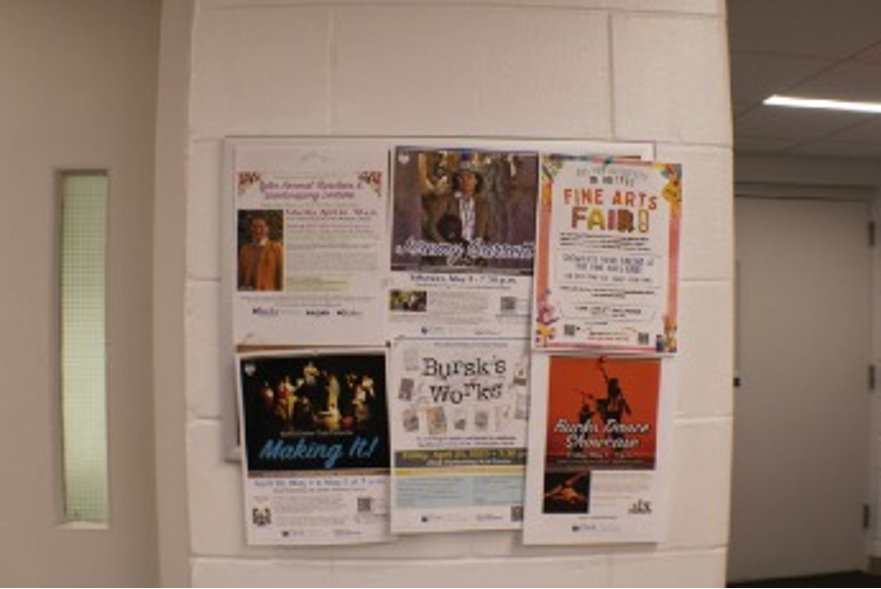Physical media is once again at risk of being assumed by technology here at Bucks, with recent talk of turning the posters around campus into digital formats available online.
While walking down the halls of any of our three Bucks campuses, you’ll see the walls covered with an array of colorful posters. These posters are a way to let students and faculty know about college events, important deadlines and gives us something (other than our phones) to look at while walking to class.
Chris Seifert, the director of Student Engagement & Leadership Development, wants to remove these posters and switch them to a digital format. Seifer said his main goals are “to reduce both the paper waste and the clutter that was existing around campus”. And in hopes “to direct people to Bucks+ and both the college’s and Student Life’s social media platforms, like Instagram, so that everyone can stay up to date on events”.
But these posters are a direct display of our active student life here at Bucks and many feel this could cause less engagement for activities around campus.
At a commuter schools, many who attend are also working a job or have children and can’t dedicate their time to extracurricular school activities. Many students will come to campus for class, leave after and never really get involved with college events.
With the posters conveniently displayed on the walls passed by students and faculty on the daily, it helps bring attention to important campus matters, even if one isn’t seeking them out.
Our students are busy and shouldn’t have to search online or on Bucks+ for information when it can be readily available in person.
Communication in the form of emails, text messages and press releases rely on viewer engagement. But the viewer must be interested in checking it out. I’m sure most people can remember a time when they received a text that didn’t seem important so instead of answering they ignored it.
If we can ignore a text message, which is directly written and sent to us. We can ignore almost anything if it’s digital because if you don’t want to see it, you can turn it off. This is why it’s important to exhibit these posters in real life. Because even when you aren’t paying attention your subconscious still picks up on your surroundings, and you can’t turn a poster off. So even if you don’t intend to read it, you’re still getting something.
It feels overwhelming being bombarded by too many messages. In an era where everything printed is being transferred to a digital format, we are losing the eye-catching visual relief provided by physical media. The significance of the digital format has become mundane.
On the other hand, paper waste is a problem so it isn’t absurd for the school, or Student Life to try to sway to a more environmentally friendly solution. Perhaps if there could be a way to work to ensure that these posters are properly recycled or even reused, we could lessen that amount of waste and let the posters continue to thrive on our walls.
But until then, let’s not try to fix what’s not broken.


